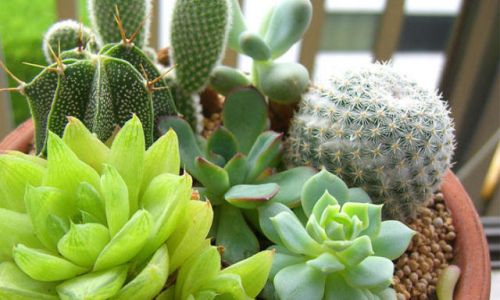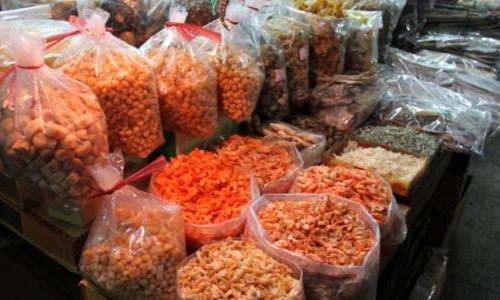Introduction
The kumquat, a small, edible citrus fruit native to China, offers a unique blend of tart and sweet flavors that makes it a delightful addition to any culinary endeavor. Whether enjoyed fresh, candied, or used in jams and marmalades, kumquats add a burst of color and flavor to dishes. Cultivating and maintaining a kumquat tree can be a rewarding endeavor for gardeners, but it requires attention to detail and a good understanding of the plant’s specific needs. This article delves into the essential tips for nurturing kumquat trees, ensuring they thrive and produce an abundant harvest of delicious fruits.
Choosing the Right Location

The first step in successfully growing kumquats is selecting the appropriate location for your tree. Kumquats thrive in full sun, preferably receiving at least six to eight hours of direct sunlight daily. They require well-drained soil to prevent root rot, as excess moisture can be detrimental to their health. If your garden soil is heavy or clay-like, consider raising the planting bed or amending the soil with sand, compost, or perlite to improve drainage.
Soil Preparation and Planting
Before planting, prepare the soil by testing its pH level. Kumquats prefer slightly acidic soil with a pH between 5.5 and 6.5. If necessary, adjust the soil pH using sulfur or lime according to the test results. Once the soil is ready, dig a hole that is twice the width and slightly deeper than the root ball of your kumquat tree. Loosen the soil at the bottom of the hole and mix in some compost or well-rotted manure to enrich it.
When planting, position the tree at the same depth it was grown in its nursery pot. Backfill the hole with the amended soil, gently tamping it down to remove air pockets. Water the tree thoroughly after planting to settle the soil and help establish the roots. Apply a layer of mulch around the base of the tree, but keep it a few inches away from the trunk to prevent fungal diseases.
Watering Requirements

Consistent and appropriate watering is crucial for the growth and development of kumquat trees. During the first growing season, water your tree regularly, ensuring the soil remains moist but not waterlogged. As the tree matures, it will become more drought-tolerant, but it still needs regular watering, especially during dry spells.
Water your kumquat deeply but infrequently, allowing the top few inches of soil to dry out between waterings. This encourages the roots to grow deeper, searching for moisture, which strengthens the tree. Avoid watering from above the leaves, as this can promote fungal growth. Instead, water at the base of the tree or use a soaker hose.
Fertilization
Fertilizing your kumquat tree at the right times and with the correct nutrients is essential for optimal growth and fruit production. Use a balanced, citrus-specific fertilizer with an N-P-K ratio of around 6-6-6 or 8-8-8. Apply fertilizer in spring and summer, when the tree is actively growing, following the manufacturer’s instructions for the correct amount.
Avoid heavy feeding in late summer or fall, as this can stimulate new growth that may not have time to harden off before winter, making the tree more susceptible to frost damage. Instead, focus on feeding the tree with organic materials like compost or well-rotted manure, which provide a slow, steady release of nutrients.

Pruning
Regular pruning is vital for maintaining the health and shape of your kumquat tree. Prune in late winter or early spring, before new growth begins. Remove any dead, damaged, or crossing branches to improve air circulation and prevent disease. Shape the tree by pruning back long, leggy branches to encourage a more compact, bushy form.
To promote fruit production, prune older branches back to a healthy bud or side branch. This stimulates new growth, which is more likely to bear fruit. Be careful not to over-prune, as this can stress the tree and reduce its fruiting capacity.
Pest and Disease Management
Like any plant, kumquat trees can be susceptible to pests and diseases. Common pests include aphids, spider mites, and scale insects. Keep a close watch for signs of infestation, such as yellowing leaves, sticky residue, or small, moving insects on the foliage. Treat infestations promptly with insecticidal soap, neem oil, or other appropriate pesticides.

Disease problems may include citrus scab, greasy spot, and sooty mold. Prevent these by maintaining good air circulation around the tree, watering at the base, and removing infected leaves and branches. If diseases do occur, treat them with appropriate fungicides, following the manufacturer’s instructions.
Winter Protection
In areas with cold winters, protecting your kumquat tree from frost is essential. Young trees are particularly vulnerable and may need extra protection, such as covering with a frost cloth or moving them to a sheltered location for the winter. Mature trees can be sprayed with an anti-transpirant to reduce water loss and prevent frost damage.
Mulching heavily around the base of the tree can also help protect the roots from freezing temperatures. If a hard frost is forecast, consider wrapping the trunk with insulation or burlap to protect it from damage.
Conclusion

Cultivating and maintaining a kumquat tree can be a fulfilling hobby that provides both beauty and bounty. By following these essential tips—choosing the right location, preparing the soil, watering appropriately, fertilizing correctly, pruning regularly, managing pests and diseases, and protecting against winter frost—you can ensure your kumquat tree thrives and produces an abundant harvest of delicious fruits. With patience and care, your kumquat tree will become a cherished part of your garden, offering years of enjoyment and culinary delight.






0 comments